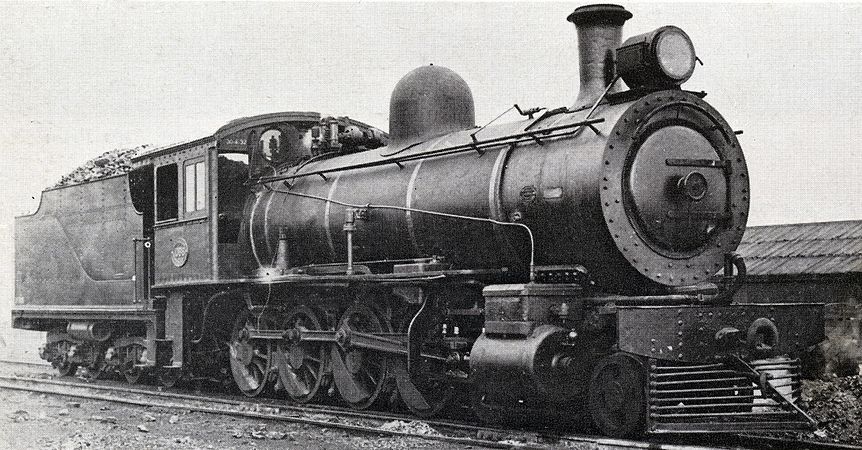|
South African type XC tender
The South African type XC tender was a steam locomotive tender from the pre-Union era in Transvaal. The Type XC tender entered service in 1910 and 1911, as tenders to the Class 10-C 4-6-2 Pacific type steam locomotives which were acquired by the Central South African Railways. These locomotives were designated Class 10C on the South African Railways in 1912.[1][2][3] ManufacturerTwelve Type XC tenders were built in 1910 by the North British Locomotive Company (NBL).[1][2][3] The Central South African Railways (CSAR) placed twelve Class 10-C Pacific type locomotives in service in 1911 and 1912. The locomotive and tender were designed in 1910 by G.G. Elliot, Chief Mechanical Engineer of the CSAR, at its Pretoria works.[1][2][3] The Type XC entered service as tenders to these locomotives, which were acquired for light passenger working on the Reef.[1][2][3] CharacteristicsThe tender had a maximum axle load of 8 long tons 18 hundredweight (9,043 kilograms), a coal capacity of 5 long tons (5.1 tonnes) and a water capacity of 2,600 imperial gallons (11,800 litres; 3,120 US gallons).[1][2][3] LocomotiveOnly the Class 10C locomotives were delivered new with Type XC tenders. In the South African Railways (SAR) years, tenders were numbered for the engines they were delivered with. In most cases, an oval number plate, bearing the engine number and often also the locomotive class and tender type, would be attached to the rear end of the tender. During the classification and renumbering of locomotives onto the SAR roster in 1912, no separate classification and renumbering list was published for tenders, which should have been renumbered according to the locomotive renumbering list. Bearing in mind that tenders could and did migrate between engines, these tenders should have been numbered in the SAR number range from 767 to 778.[3][4] Classification lettersSince many tender types are interchangeable between different locomotive classes and types, a tender classification system was adopted by the SAR. The first letter of the tender type indicates the classes of engines to which it can be coupled. The "X_" tenders could be used with the locomotive classes as shown.[3]
The second letter indicates the tender's water capacity. The "_C" tenders had a capacity of between 2,590 and 2,600 imperial gallons (11,770 and 11,820 litres; 3,110 and 3,122 US gallons).[3] A number, when added after the letter code, indicates differences between similar tender types, such as function, wheelbase or coal bunker capacity.[3] RebuildingThe Class 10C locomotives were soon found to be capable of handling mainline passenger trains and they were therefore equipped with new and larger Type XM2 tenders.[5] From c. 1925, the redundant Type XC tenders were completely rebuilt by the SAR by mounting a completely new upper structure on the existing underframe, with new water tanks and a larger coal capacity. These rebuilt tenders had a more modern appearance, with flush sides all the way to the top of the coal bunker. They had a coal capacity of 10 long tons (10.2 tonnes), a water capacity of 3,000 imperial gallons (13,600 litres) and a maximum axle load of 11 long tons 3 hundredweight 2 quarters (11,350 kilograms). They were reclassified as Type XF.[2][3][6] The program to rebuild several older tender types with new upper structures was begun by Col F.R. Collins DSO, who approved several of the detailed drawings for the work during his term in office as Chief Mechanical Engineer of the SAR from 1922 to 1929. It was continued by his successor, A.G. Watson.[7] IllustrationReferences
|
||||||||||||||||||||||||||||||||||||||||||||||||||||||||||||||||

